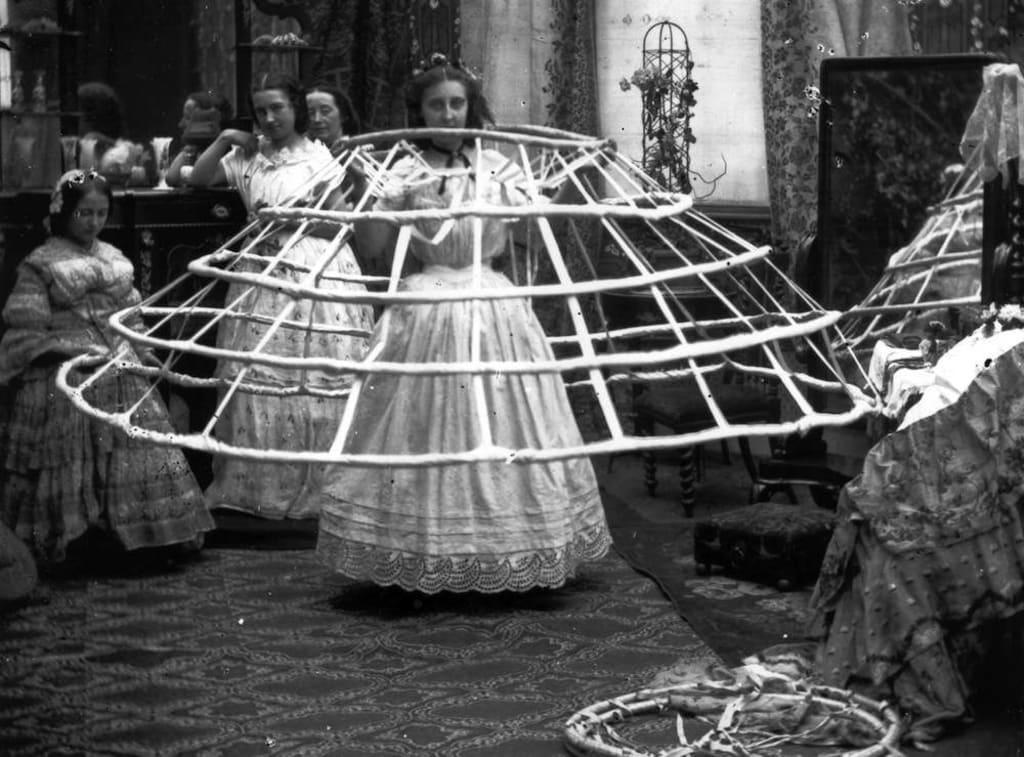
The corset has a bad reputation. And unfairly so, according to real women, and actual evidence, who say this undergarment of centuries past is not nearly as evil or confining as modern folks have come to believe. First, though, a bit of quick history - The corset has been an indispensable article of clothing for several centuries in Europe, evolving as fashion trends have changed. Women, as well as some men, have used it to change the appearance of their bodies. The corset first became popular in sixteenth-century Europe, reaching the zenith of its popularity in the Victorian era. While the corset has typically been worn as an undergarment, it has occasionally been used as an outer-garment; corsets as outer-garments can be seen in the national dress of many European countries. Even as it gained popularity, the corset was not worn by everyone. Mary, Queen of Scots, for example, did not wear a corset. During the reign of Louis XV of France and again during the French Revolution, the corset went out of style, as the fashions were simpler. But, what you know as a corset, and the term corset itself only came into use at the start of the Victorian era (1820s and 1830s) and lasted up through the 50s and 60s. Previously, women (and mostly in England - the french were less keen on them) wore stays. In early 16th century Europe, corsets called “payre of bodies'' or ‘stays’ pushed the breasts upward and shaped the torso into a slim cylinder, thanks to boning made of horn, buckram or whalebone, and a flat wooden “busk” running down the center. But by the 17th century, corsets took on more of a cone-like shape, often made of two separate pieces of boned fabric known as stays, held together in the front with the busk. For a brief time, from 1800 to 1830, the Napoleonic high “empire waist” allowed for short stays to reign briefly.
Even though so-called “tight-lacing” was popular during the late 1800s, women rarely reduced their waists more than 1-2 inches. Generally, a corset with a 20-inch waist would be worn with a gap in the back, so the woman’s corseted waist measured between 22 and 26 inches. Where did these tales of ladies of the court and their obscenely tiny 13-inch waists come from? Fetish fantasy literature of the era.
Over the years, corsets have been credited with causing a whole litany of health problems. It’s been said that they misshape internal organs and cause cancer. Other illnesses attributed to corsets were fake, sexist conditions, like “hysteria.” There’s also no record of a woman having a rib surgically removed so she could better fit into a corset, which is a particularly absurd myth, given how deadly surgery was in the 1800s. Of course, they weren’t exactly the healthiest things to wear every day, either. They did force organs to shift around, cause indigestion and constipation, and eventually weakened back muscles. And they didn’t leave a lot of room for pregnant women’s fetus-incubating bellies. But deadly they were not. They also didn’t prevent women from doing their work—any more than, say, stiletto heels do. For example, the idea of the misshapen liver seems to be a mistake based on the fact that there is a lot of variation in the shape of livers. When doctors did autopsies, they would see these weird-looking livers and they’d go, ‘That was caused by the corset.'
Women wore corsets quite on their own volition. Men, in fact, regularly protested corsets, claiming they caused hysteria and the other health problems mentioned above. Women wore the corset because it made them feel attractive and properly dressed, two important indicators of status. Also, historically, good posture was considered a very important part of being beautiful. Imagine trying to have good posture whilst wearing 100 pounds of clothing. Corsets helped straighten the spine and keep women standing upright.
The Edwardian period hailed a whole new corset shape. This decade at the turn-of-the-century (1901-1910) represented a tremendous time of transition in fashion, as the elaborate getups of the Victorian Era got a bit more ridiculous, and then fell out of style altogether. The silhouette changed completely, as did the corsets. Then, in the 1920s, contrary to popular belief, women still wore corsets, though they began to resemble longer, boned, and laced girdles. The 1930s saw less corsets, as did the 1940s, for the most part, except towards the end of the decade, with Dior’s ‘New Look’ emphasizing a tiny ‘wasp waist’ which would become one of the defining features of 1950s fashion - it brought back a different version of corsetry, with waspies and corselettes. Even nowadays, women still wear shapewear!
About the Creator
Jules Monfort
History, Fashion History, and Period Drama Bashing.






Comments
There are no comments for this story
Be the first to respond and start the conversation.